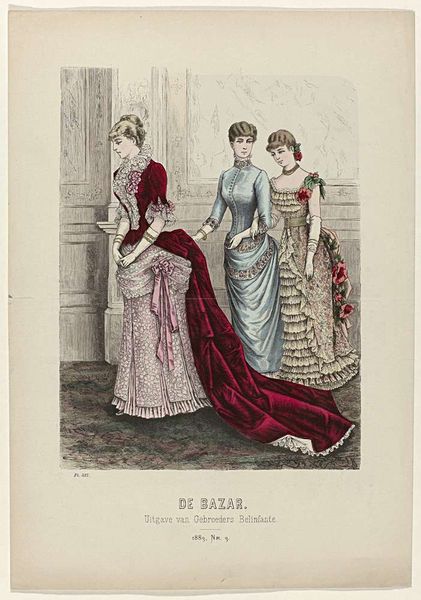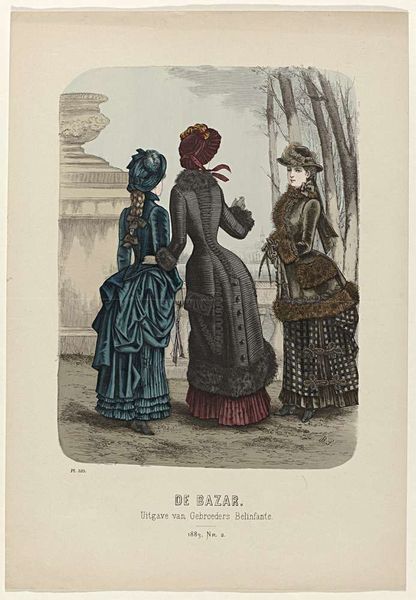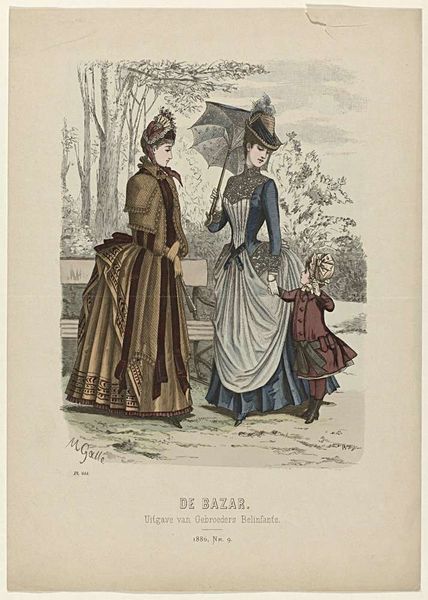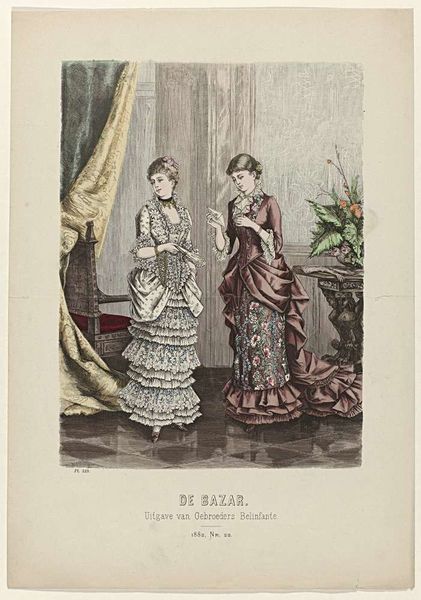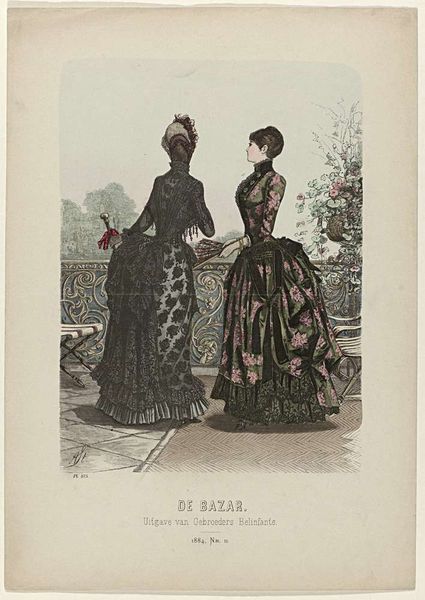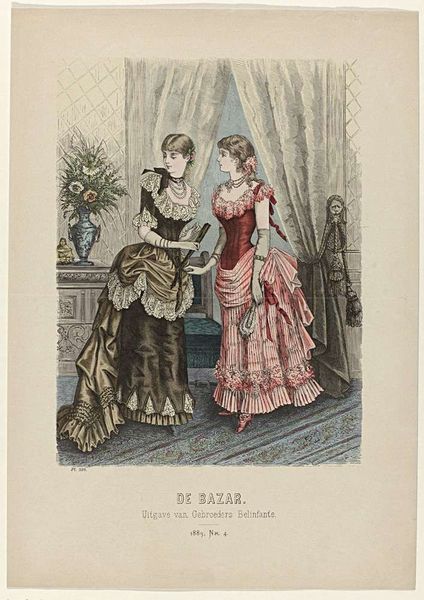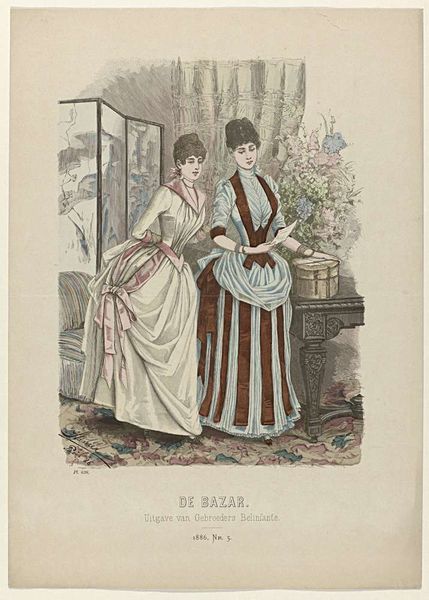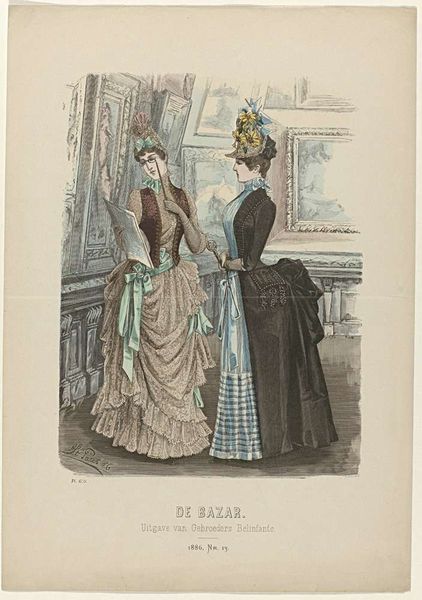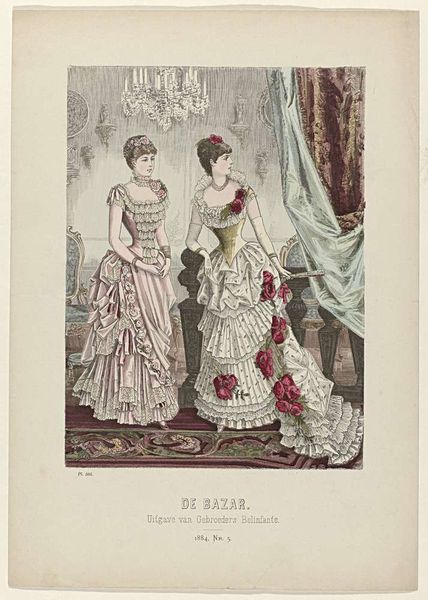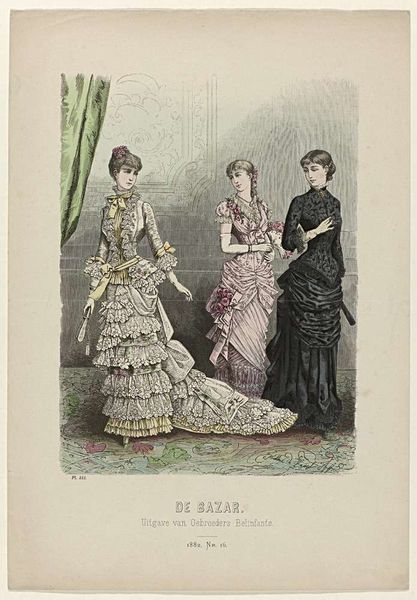
coloured-pencil, print
#
portrait
#
coloured-pencil
# print
#
impressionism
#
historical fashion
#
coloured pencil
#
traditional art medium
#
genre-painting
Dimensions: height 381 mm, width 268 mm
Copyright: Rijks Museum: Open Domain
Editor: This is a print titled "De Bazar, 1883, Nr. 11, Pl. 539," created in 1883 using colored pencil. The image depicts three women in elaborate historical dresses. I’m immediately struck by the textures, the meticulous details rendered with such precision. What do you notice about its composition? Curator: Immediately apparent is the careful articulation of form through line and colour. Consider how the artist employs coloured pencil to create varied tonal values and to define the contours of the figures. The three figures are staggered and the detailed surface decorations play against a muted backdrop and subtly framed painting. Observe, for example, how the cascade of ruffles is constructed: the individual layers build form in terms of surface. Are they entirely successful at conveying a three-dimensional form, however? Editor: I see what you mean! The dresses are incredibly detailed but almost flattened at the same time. It's like the texture is prioritized over realistic depth. The ruffles and fabric details become almost abstract patterns. Do you think the artist was aiming for accuracy? Curator: Precision here appears less of a representational tool and more a mode of emphasizing texture. Look closely and consider, for example, how surface qualities are reinforced over other mimetic factors like consistent foreshortening. The emphasis shifts from capturing 'likeness' to achieving specific arrangements of colours and forms and intricate detail. We might further investigate whether this print could serve a function, given the title references a “Bazar.” Editor: That's interesting. So, rather than striving for a lifelike portrayal, the artist seems to be more interested in the aesthetic possibilities of texture and detail, maybe even for design purposes? Curator: Precisely. What was initially observed for “historical dresses” invites an open inquiry towards use, or rather towards function that, if it exists, might best explain certain aspects of visual emphasis. Editor: That makes me see the piece in a completely new light, it’s more than just a portrait, it's about the aesthetic possibilities of fashion as form. Curator: A subtle but crucial shift in perspective allows for deeper appreciation of intrinsic qualities and challenges assumptions.
Comments
No comments
Be the first to comment and join the conversation on the ultimate creative platform.
